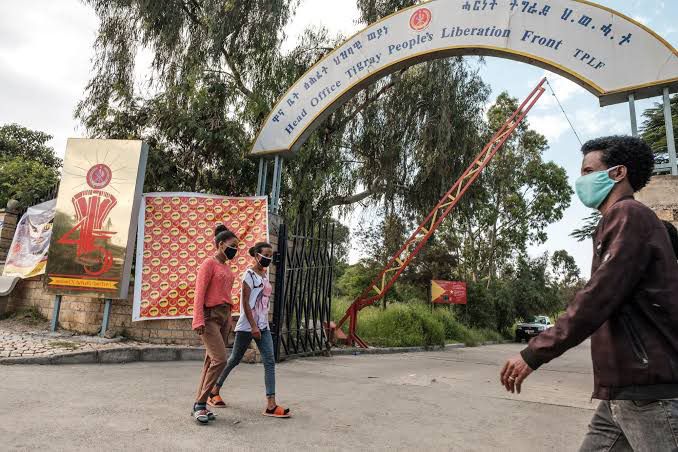The Tigray People’s Liberation Front has rejected accusations by Ethiopia’s federal government that it is preparing for renewed war in coordination with Eritrea, as relations between the signatories of the Pretoria agreement deteriorate nearly three years after the peace deal was signed to end one of the 21st centuries deadliest war.
In a letter to U.N. Secretary-General António Guterres dated Oct. 8, the TPLF accused the government of Prime Minister Abiy Ahmed of fabricating stories to divert attention from what it says Federal government’s failure to implement the 2022 Pretoria peace agreement, which ended a two-years of war on Tigray that killed hundreds of thousands and left millions displaced.
“The accusation that the TPLF is preparing for war in concert with Eritrea and other armed groups is entirely unfounded,” the party said in the letter. “Rather than advancing the peace process, such misrepresentations divert attention from the Federal Government’s continued and serious violations of the Cessation of Hostilities Agreement.”
The letter from the TPLF came less than a week after Ethiopia’s Ministry of Foreign Affairs sent a similar communication to the U.N., alleging that Eritrean and TPLF forces were forming a military alliance under an initiative known as Tsimdo and were actively preparing for war. The Ethiopian government alleged that the Eritrean government and TPLF were allegedly involved in a recent offensive by the Fano militia aimed at capturing Woldiya, a major town in the Amhara Region. The government claimed that TPLF commanders and fighters participated directly in the operation, with additional skirmishes reported in Raya and Welkait.
“Eritrean and TPLF forces are actively preparing to wage war against Ethiopia,” the ministry of Foreign affairs wrote in its Oct. 2 letter, accusing both of “coordinating activities” and “ Supporting combatants” in the Amhara region. The claim by the Federal government has not been independently verified however the TPLF said the government’s accusations are “a campaign to build a case for yet another war in Tigray on the basis of such unfounded allegations.”
The TPLF accused the Federal government of undermining both the letter and sprit of the Pretoria agreement and working to destabilize Tigray. In its letter the party said “the Federal Government has continued training and arming of militias including the Tekeze Zeb and certain disgruntled Tigrayan youth in Afar and other neighboring areas aimed at destabilizing Tigray.” Warning that “this actions risk reigniting conflict and undermining the fragile peace.”
The TPLF has called for a genuine political dialogue emphasizing that it is the only way out of the current impasse. It also urged the strengthening of the Joint Monitoring, Verification, and Compliance Mechanism, with the necessary independence and access to verify compliance; the withdrawal of all non-ENDF forces from Tigray; the facilitation of the safe and dignified return of IDPs; and the pursuit of accountability for grave violations of human rights and humanitarian law.
Stalled Peace and Rising Mistrust
The roots of the current tension trace back to the Pretoria Agreement, signed on November 2, 2022, which was meant to end two years of devastating war on Tigray. The agreement promised to restore constitutional order in Tigray, return IDPs and refugees, withdraw foreign troops concurrently with the disarmament of Tigrayan forces, resume humanitarian access, political dialogue accountability and reconstruction. However more than two years later, many of these promises remain unfulfilled. Large portions of Tigray remain under Amhara regional and Eritrean control, despite provisions requiring their withdrawal. Schools, hospitals, and public infrastructure remain in ruins, while nearly one million internally displaced people and tens of thousands of refugees in neighboring Sudan continue to live in makeshift camps with limited food, water, and medical care.
Many sites the structural flaws in the agreement and lack of decisive intervention from the mediators and facilitators as a major reason for its stalled implementation. Nearly three years after the Pretoria Agreement was signed under African Union mediation, the peace it promised remains tenuous while the AU, the broader international community, and other mediators have largely chosen to look away as implementation stalls, tensions escalate, and humanitarian conditions deteriorate.
The AU’s Monitoring, Verification, and Compliance Mission has remained largely symbolic, while global actors like the US, EU and the UN have offered statements but little substantive pressure on either side to comply. The inaction of the African Union and the international community is leaving a dangerous vacuum. Both the federal government and the TPLF are left to act on suspicion, and tensions continue to escalate unchecked and the consequences on the ground are evident. Nearly one million displaced Tigrayans remain in precarious conditions, with limited access to food and medical care and the prospect of Justice, accountability, reconstruction and political dialogue to address underlying issues remains precarious and without meaningful political dialogue or mechanisms to address grievances and both sides are entrenching positions, raising the risk that the fragile peace could collapse into renewed conflict.
Communities Still Healing Brace for Uncertainty
In towns and villages across Tigray, residents say they are anxious about the growing tensions. Many have only begun to recover from the war that ended in late 2022, which left widespread trauma, displacement, and destruction. For ordinary Tigrayans, still bearing the physical and emotional scars of the previous war, the prospect of relapse into conflict is deeply unsettling.
The thought of another outbreak of hostilities intensifies anxiety, undermines fragile recovery efforts, and forces communities to relive horrors they hoped were behind them. For a population already stretched by years of suffering, the return of conflict is not just a political or military concern, it is a personal and existential fear.


